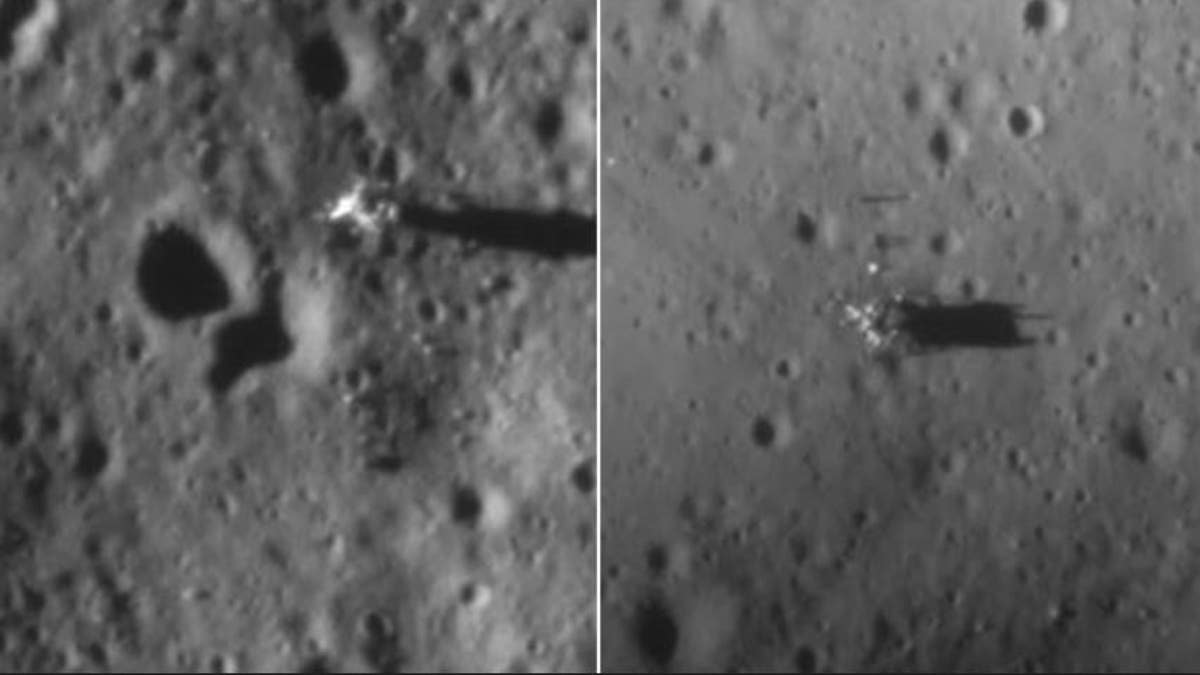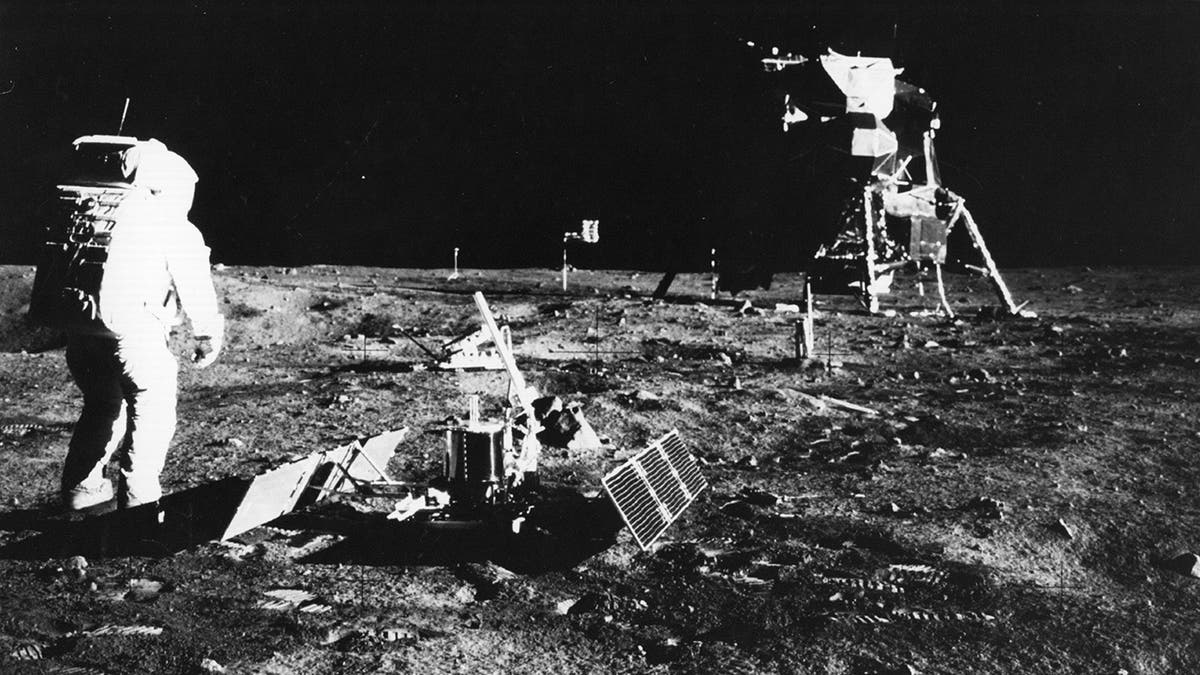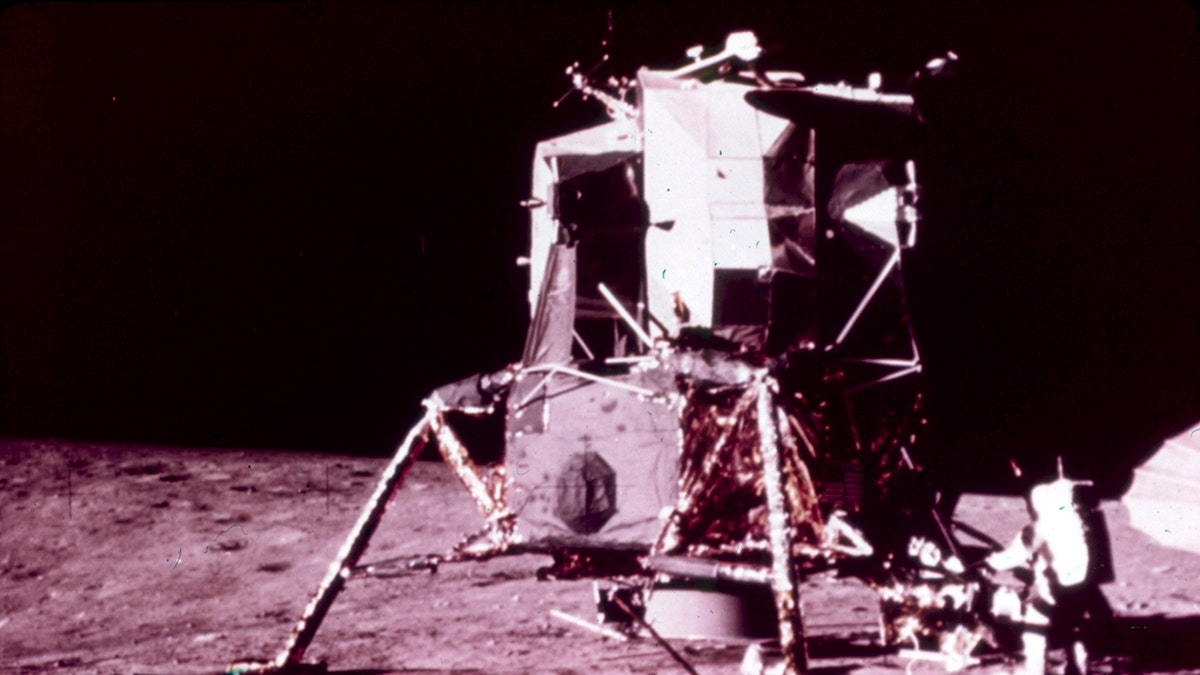Orbiter photos show lunar modules from first 2 moon landings more than 50 years later

Orbiter photos show lunar modules from first 2 moon landings more than 50 years later
Recent photos taken by India’s Space Research Organization moon orbiter, known as Chandrayaan 2, clearly show the Apollo 11 and Apollo 12 landing sites more than 50 years later.
The photos were taken by the Chandrayaan 2 orbiter in April 2021 and were reshared on Curiosity’s X page – which posts about space exploration – on Wednesday.
"Image of Apollo 11 and 12 taken by India's Moon orbiter. Disapproving Moon landing deniers," Curiosity wrote on X, along with the overhead photos that show the landing vehicles on the surface of the moon.
Apollo 11 landed on the moon on July 20, 1969, making Neil Armstrong and Buzz Aldrin the first men to walk on its surface.
US PREPARES TO DEORBIT INTERNATIONAL SPACE STATION AMID CHINA COMPETITION

Recent photos taken by India’s Space Research Organization moon orbiter, known as Chandrayaan 2, clearly show the Apollo 11 and Apollo 12 landing sites more than 50 years later. (India Space Research Organization )
Astronaut Michael Collins, the third man on the Apollo 11 mission, remained in orbit while Aldrin and Armstrong walked on the moon.
The lunar module, known as Eagle, was left in lunar orbit after it rendezvoused with the command module Collins was in the next day and Eagle eventually landed back on the moon’s surface.
Apollo 12 was NASA’s second crewed mission to land on the moon on Nov. 19, 1969, in which Charles "Pete" Conrad and Alan Bean became the third and fourth men to walk on its surface.

Apollo 11 astronaut Edwin 'Buzz' Aldrin deploys a scientific experiment package on the surface of the moon. In the background is the Lunar Module, as is a flag of the United States. (Photo by Neil Armstrong/NASA/Getty Images) (Neil Armstrong/NASA/Getty Images)
The Apollo missions continued until December 1972, when the program was shut down and astronaut Eugene Cernan became the last man to walk on the moon.
NASA FINALIZES STRATEGY FOR HUMAN PRESENCE IN SPACE
The Chandrayaan-2 mission launched on July 22, 2019, exactly 50 years after the Apollo 11 mission and two years before it captured images of the 1969 lunar landers.

Beside NASA's Apollo 12 'Intrepid' Lunar Module, American astronaut Alan Bean unloads equipment from the Modular Equipment Stowage Assembly (MESA) on the surface of the moon, November 19, 1969. (NASA/Interim Archives/Getty Images)
CLICK HERE TO GET THE FOX NEWS APP
India also launched Chandrayaan-3 last year, which became the first mission to successfully land neat the moon’s south pole.
- News
- Mysticism
- Horoscope
- Bath & Body
- Soap Making
- Books
- Art
- Causes
- Crafts
- Dance
- Drinks
- Film
- Fitness
- Food
- Jeux
- Gardening
- Health
- Domicile
- Literature
- Music
- Networking
- Autre
- Party
- Religion
- Shopping
- Sports
- Theater
- Wellness



